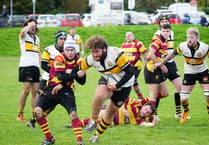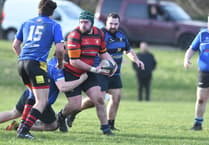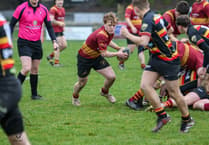TT and Manx Grand Prix travelling marshal Jim Hunter was invited to officiate at Mexico’s Cain road race in November.
He travelled out to the event with friend and fellow former Manx Grand Prix rider Ronnie Russell, a podium finisher in the 1977 Junior.
The event was quite an eye opener to both, each of them well-steeped in road racing and heavily involved in the sport for the past 40 to 50 years either as a rider and official in Jim’s case and rider/sponsor/tuner in Ronnie’s.
The latter put together this interesting account of the time in Mexico, while Jim was also interviewed by John Watterson for Gef the Mongoose, which will go live over the next few days.
In addition to Jim Hunter, two-time TT winner Gary Johnson and Mountain Course regular Matthew Rees were also invited.
The Cain (pronounced Cayine) motorcycle race near the Pacific shoreline resort of Mazatlán in the Mexican state of Sinaloa is the youngest road race in the world [2017] and longest [74km - 46 miles].
It is organised by Jorge Quinones and a very small team of helpers. Jorge, along with his great friend Héctor Quintanilla and a few others, generously were responsible for bringing out Johnson, Rees and their partners to see what they thought of the event.
Quinones thought up the idea of running a race through the mountains 48km from his home resort town of Mazatlán. The race is known locally as ‘the Devil’s backbone’ and runs for 46 miles on quite good Tarmac road starting in the small town of El Palmito, some 1,900 metres above sea level (more than three times the height of Snaefell).
It runs mainly downhill like a reverse Pike’s Peak, starting with nice second and third-gear corners before straightening out on fourth and fifth-gear sweeping bends towards the finish near the beautiful town of Concordia.
It also passes through the Tropic of Cancer one third of the way down, along with around 10 villages.
The event has grown over the past seven years, with the exception of the Covid period. In 2021 around 100 competitors took part. The Guardia National was drafted in for crowd control in the towns and villages, along with marshals, and there were also approximately five ambulances in attendance.
The latest edition saw a further 20% increase in competitors, improved medical support with 11 ambulances and for the first time a helicopter coordinating the whole length of the run. Pre-Covid it is estimated that a few thousand spectators attended, but 2022 was thought to be well in excess of 12,000.
The route has some great vantage spots on the 538 bends, lots of street food and atmosphere in the villages and near-perfect conditions in temperatures ranging from 28-30C.
Race control was in Concordia, near to the finish, where riders’ briefings and registration took place. Trade stands were situated in a magnificent palm tree-lined square.
Most of the competitors and spectators stayed at the busy seaside town of Mazatlán (population 470,000), 47km away on the Pacific Ocean. It is a real gem with very good, inexpensive hotels, 20km of beaches and three nearby islands.
There are loads of restaurants, bars, street food, a nice old-town area, museums, marlin fishing, five or six golf clubs, safaris and even facilities, with a brief assessment of general riding skills as the organisers want the event to grow properly and economically.
Hunter is well qualified as he is not only a highly experienced travelling marshal, vice-chairman of the Manx Motor Cycle Club (organises of the MGP) and does a lot to encourage newcomers to the Manx. His comments and advice were well received.
The hope is that the event continues to grow, with greater focus on safety and attracting more international riders and spectators.
Quinones and Quintanilla would love to see the flag of Mexico waving from the Grandstand at the MGP (denoting the presence of a rider or riders competing from that country). Perhaps a couple of months later a rider from the Isle of Man will be waving a Manx flag at the Cain event.



